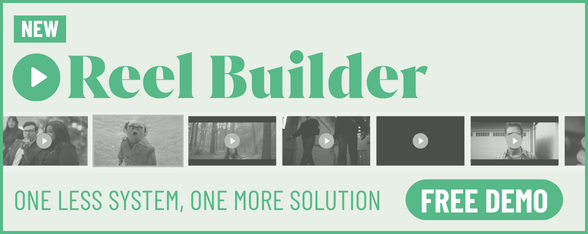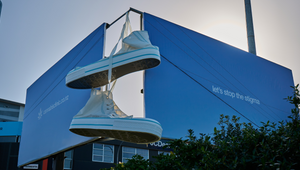
Phillip Robbie-Porter Thinks a 15 Minute Conversation Solves Most Problems

Phillip Robbie-Porter is creative partner at ABEL. His decade in the industry has seen him collaborate on strategic creative work for clients like Pinterest, Google, Optus, Mentos, Macquarie Bank, and MILKRUN.
LBB> Person: Do you think creativity is something that’s innate or something that you learn? Why?
Phillip> I’ve always found the rhetoric about people being innately ‘creative’ or not a little odd, and more than that, limiting.
We see ‘creative’ as a trait that usually emerges in secondary school -- sometimes earlier-- on the basis of some level of achievement in the humanities. The problem with this is that those who aren’t deemed ‘creative’ by academic reporting then self-select themselves out of pursuing it further.
You see, few people come back to creativity after they’ve already explored careers elsewhere, because it’s a steep climb -- but as we’ve found at ABEL, those who do really arrive with a special perspective.
I take a similar issue with the delineation of ‘creative’ and ‘strategic’ thinking. You see, traditional agency models affirm this with separate departments, separate roles, and separate involvement in projects. We only limit the potential of the people in our industry by establishing mutually exclusive structures that necessitate picking a lane.
For anyone who doesn’t identify with being creative, I’d ask you to consider what creative passions you had at eight -- you may have parked your innate creativity there, but that’s still very much you.
LBB> Product: Overall, what do you make of the industry’s creative output right now? What’s exciting you about it or frustrating you?
Phillip> At this moment, our industry is seeing AI as the biggest revolution to creating work -- but it ignores a far more interesting shift we’re about to see: our audiences and customers using AI to consume our work.
You might have used ChatGPT to write something or Midjourney to create an image, but have you seen people use NotebookLM to turn a 300-page annual report into a digestible 20-minute podcast? Have you searched a complex topic online and only read the AI summary?
Take researchers and scientists who publish textbooks and journals. Their output will cease to simply be material for students or academics to buy and read -- they’re creating knowledge manuals for AI to re-dispense and deliver. Much in the way content creators have had to edit and craft their content to better serve the algorithm, writers will need to optimise material to be absorbed into your audience’s conversational AI tool of choice.
Naturally, as creative people, we’re having a huge conversation about how AI is changing the tools with which we create, but it’s also changing the way our audiences experience. And that’s where things will get interesting.
LBB> Process: When it comes to the hard bits of a project, when you’re stumped, do you have a process or something you like to do to get past those tricky bits?
Phillip> If ABEL had a middle name -- and it wasn’t 'danger' -- it would be 'collaboration'. It’s rooted in everything we do as a team, how we work with our clients, and how we create with our production partners.
When there's a tricky brief on the table, or a roadblock that needs to be overcome, we’ll often say, “There’s no problem that can’t be solved with a 15-minute conversation.” This is not strictly true, of course...
However, the statement makes collaboration easy; everyone can find 15 minutes, and it begs you to come unprepared. Low stakes create a safe space. Most importantly, it's boring to have boring conversations, so interesting ideas and solutions always surface, if not only for the sake of good conversation.
And that’s what all good creative -- and effective -- advertising is: simply an interesting truth that moves people by being told in an interesting way. And you’d be surprised how far a quick conversation can take you in regards to getting there.
LBB> Press: What advice would you give to clients looking to get the best out of the teams and agencies they work with?
Phillip> That everyone needs to be aligned against a clearly defined goal is the single best way to get the most out of any team; and it’s truer for client and agency teams, because you’re aligning two.
There’s an immediate jump to the goal being defined by the communications problem. While this is always an inherent component of any piece of work, I believe clients get better results from their agencies, and the agencies create better work, when everyone is aligned to the business problem, instead.
For clients, this means inviting your agency to start the collaborative journey earlier. It involves a little more trust and a little more exposure than what might usually feel comfortable -- but you’ll work to achieve something that solves a problem -- not just hit a deadline.
For agencies (and the people at every level in them), your client’s business is your business. This means that even if you are only solving a communications problem, you need to know how your client makes money and how their business operates. It’s a defining component of any work you generate for them, and is often lost in the process, making it harder for agencies and clients alike to achieve anything.
Ultimately, phasing out the notion of briefing communications problems and instead sharing business ambitions is where clients and agencies can win together.















